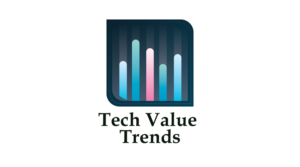In the fast-paced world of data-driven decision-making, creating dashboards that stand the test of time is no easy feat. Much like a fine wine that improves with age, a dashboard should be designed to evolve and remain relevant as data changes. Temporal analytics design involves crafting dashboards that not only provide insightful data but also grow with the business needs, ensuring they don’t become outdated or cumbersome. This process is not about just putting together a few charts and numbers; it’s about creating a system that ages gracefully, allowing it to stay effective and valuable over time.
The Art of Building a Timeless Dashboard
Designing a dashboard with longevity in mind requires a mindset shift. Instead of designing just for the present moment, you need to anticipate future needs and growth. Think of it as building a classic car,a design that not only looks good but also retains its value, functionality, and relevance for decades. To achieve this, dashboards must be intuitive, flexible, and capable of adapting to changing data over time.
This adaptability is a critical factor in creating dashboards that evolve with your business. The dashboard should have the flexibility to adjust to new data sources, metrics, or even changes in the user base without requiring a complete overhaul. By designing for scalability and future expansion, a dashboard becomes a long-term tool, rather than something that will need frequent updates.
Embracing a Dynamic Design
A static dashboard may work well for a short time, but a dynamic one keeps pace with the flow of data. The goal is to create dashboards that not only serve as real-time monitors but also have the capability to track trends, identify historical patterns, and project future outcomes. Allowing users to find and interact with data in various ways fosters engagement, making the dashboard a valuable tool long after its initial implementation.
The key to a dynamic design is the use of filters, date ranges, and customizable views that allow users to adjust the presentation of data according to their needs. A well-designed dynamic dashboard doesn’t just provide a snapshot of the present but opens the door to understanding past behaviors and forecasting future possibilities. This feature makes the dashboard versatile enough to adapt as new business needs arise, ensuring it remains useful and relevant over time.
Prioritizing Data Integrity and Consistency
For a dashboard to truly age gracefully, it must maintain a strong foundation of accurate and consistent data. If the data feeding into the dashboard is unreliable or inconsistent, the entire dashboard becomes unreliable, and any future enhancements will be built on shaky ground. Consistent data is the backbone that supports everything else in the dashboard, from visualizations to insights.
Just as an architect wouldn’t build a house on a poor foundation, a designer must ensure that the dashboard’s data is trustworthy. This can be achieved by implementing strong data validation checks and utilizing data pipelines that ensure clean, accurate, and consistent information. In addition, by maintaining data lineage and understanding how data flows into the dashboard, businesses can quickly troubleshoot when things go awry. Building this data integrity into the design ensures that as the dashboard ages, it continues to provide reliable insights without requiring constant monitoring and updates.
Designing for User Experience
A key consideration in temporal analytics design is the user experience (UX). The best dashboards are those that feel effortless to navigate and make the process of interacting with data intuitive. While it’s important to focus on data quality and presentation, a dashboard’s longevity depends largely on how easily users can access and interpret the information they need.
A dashboard that is too complex or difficult to use will quickly lose relevance. A streamlined, organized interface with clear visualizations will encourage user engagement over time. Additionally, considering the different ways users interact with data, whether on a desktop or mobile device, helps ensure that the dashboard remains accessible no matter how the business or team evolves.
By focusing on simplicity and clarity, the dashboard maintains its usability, even as new features or updates are added. This is why creating user personas and understanding the specific needs of the dashboard’s end users is crucial. Designing with the user in mind ensures the dashboard remains a helpful tool throughout its lifecycle, supporting decision-making at every stage.
The Long-Term Perspective: Future-Proofing Dashboards
A key challenge in creating dashboards that age gracefully is anticipating future needs. Trends, technologies, and business objectives are constantly changing, and the dashboard must be built to accommodate these changes. To ensure longevity, consider the possibility of integrating new data sources, evolving business goals, and emerging technologies into your design.
A future-proof dashboard might feature automated updates, machine learning models that adapt over time, and the ability to connect with new data sources without disrupting the user experience. This kind of foresight ensures that your dashboard is not just a tool for today but a valuable asset for years to come. Staying updated with the latest trends in data analytics coaching in Bangalore is crucial, as it enables you to learn about best practices and emerging technologies in dashboard design.
Conclusion: Ageing Like Fine Wine
Temporal analytics design is about creating dashboards that not only provide current insights but also evolve to remain relevant and useful in the future. Just like fine wine, a well-designed dashboard improves over time, adapting to new data and business needs. By focusing on flexibility, data integrity, user experience, and future-proofing, you can build a dashboard that will age gracefully, continuing to provide value and insights long after it was first created. Embrace the art of design with a long-term view, and your dashboard will continue to serve as a reliable tool for data-driven decisions, no matter how much the world around it changes.

